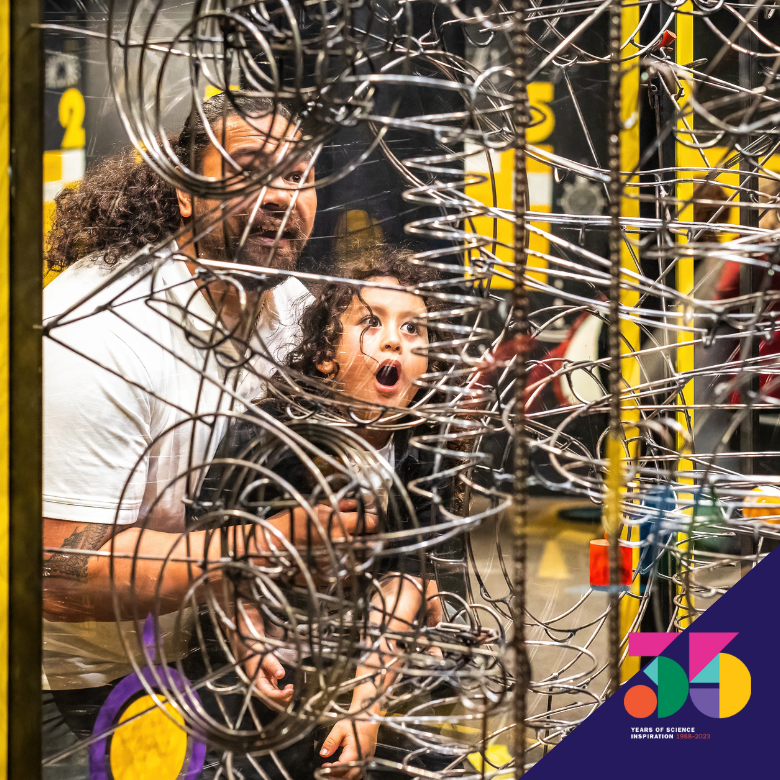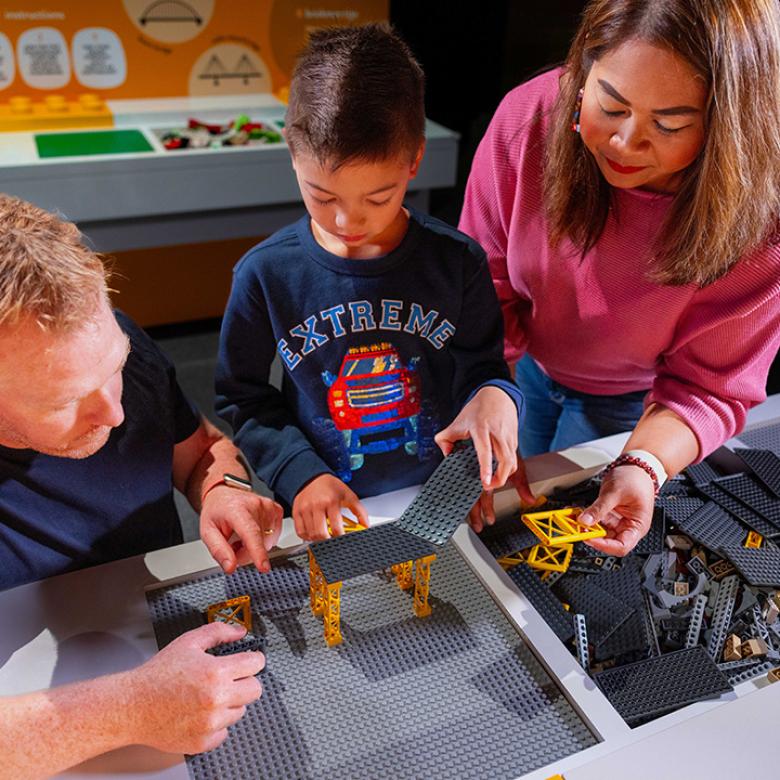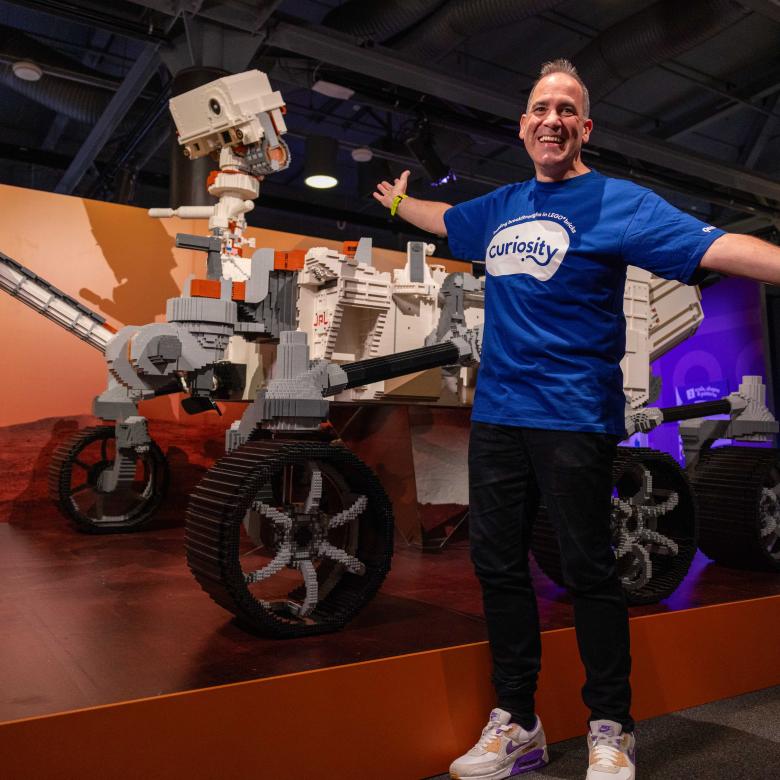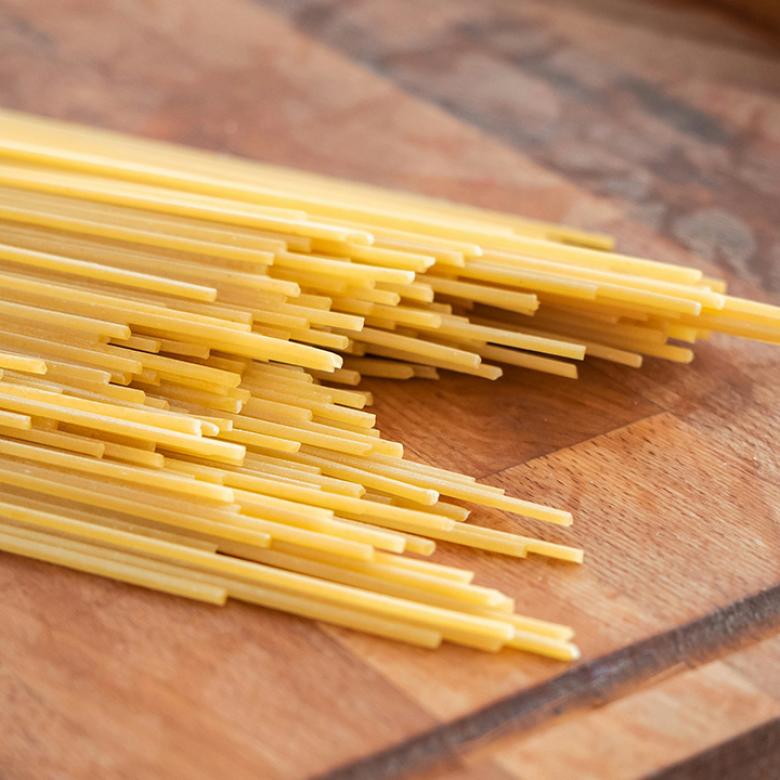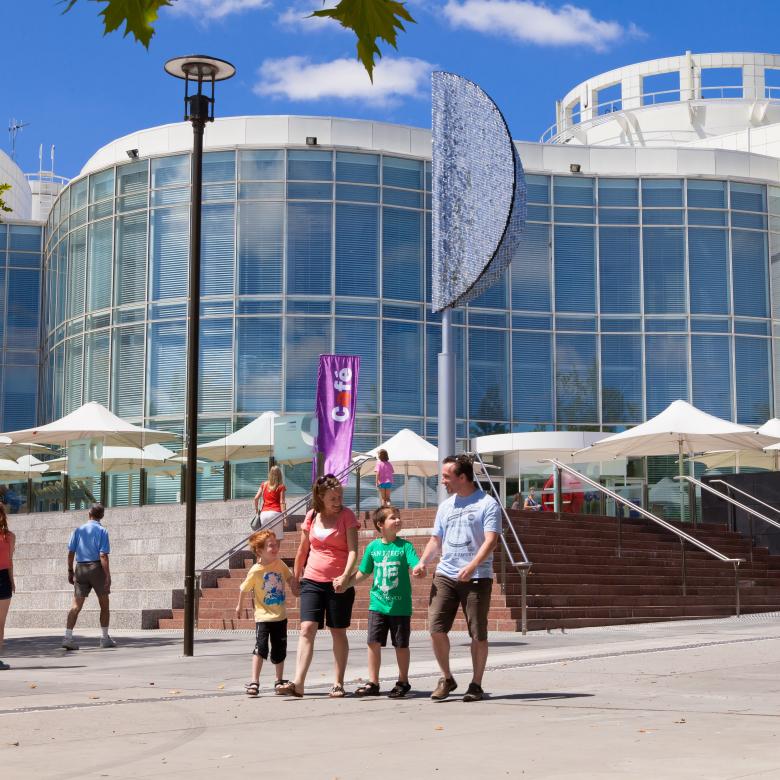It’s a towering tangle of metal wires and rolling balls.
Its imposing presence, looming over two metres tall (2.3 m / 7.5 ft) with beckoning chimes and clinks, draws in young and old alike, who stop and are transfixed by a mesmerising mesh of science and art.
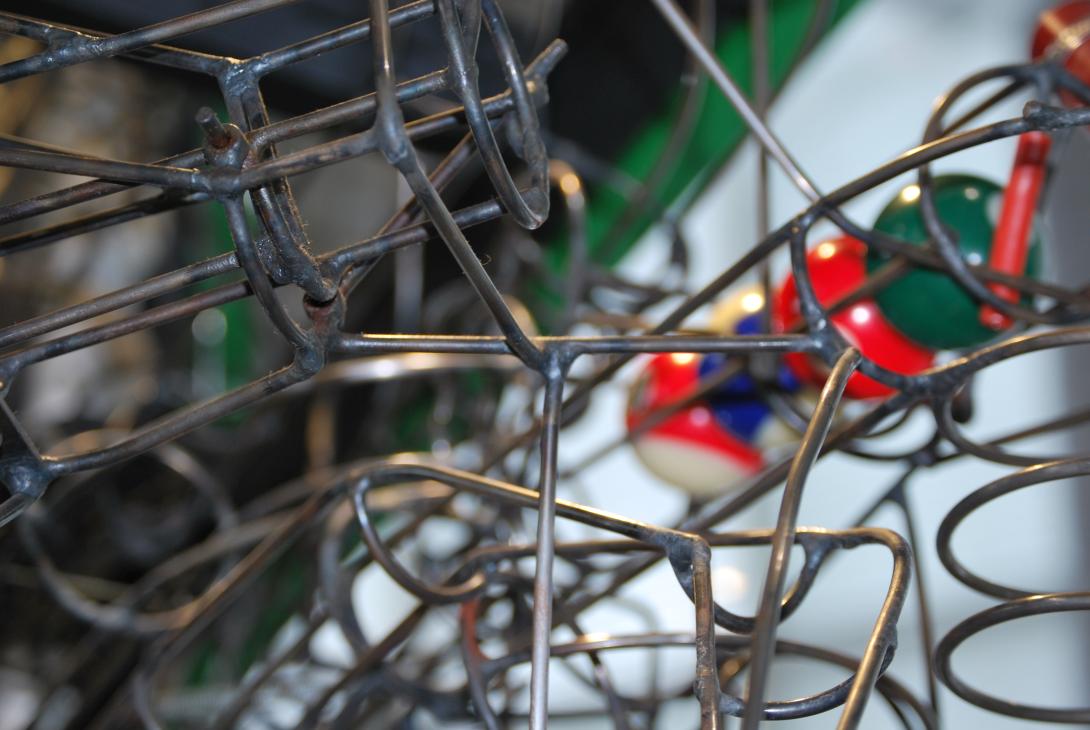 This glass-encased beauty is Questacon’s Gravitram and it’s as old and as iconic as the Centre itself.
This glass-encased beauty is Questacon’s Gravitram and it’s as old and as iconic as the Centre itself.
Commissioned for Questacon’s opening in 1988 but celebrating its 36th year, the Gravitram is the brainchild of Bulgarian-born American inventor and engineer, Shab Levy, who named it after the two most important elements to his creations - GRAVity and TRAMway.
Working from his home in Portland, Oregan from 1972, Shab had designed only four such mighty machines, when construction of Gravitram 5 - bound for Canberra - moved into Shab’s back yard to avoid the height constraints of his basement.
Building these welded wonders, Shab, now in his 80s, has said he was expressing himself “by creating a kinetic sculpture that would be whimsical, attractive and complex all at the same time.” His specific ideas about the Gravitram where the result of “tinkering with balls, rolling these in channels and trying to attach some logic to this tinkering.”
As you watch the billiard balls seemingly shoot and ricochet about Gravitram’s encasement, you are getting a disguised lesson in Newtonian physics.
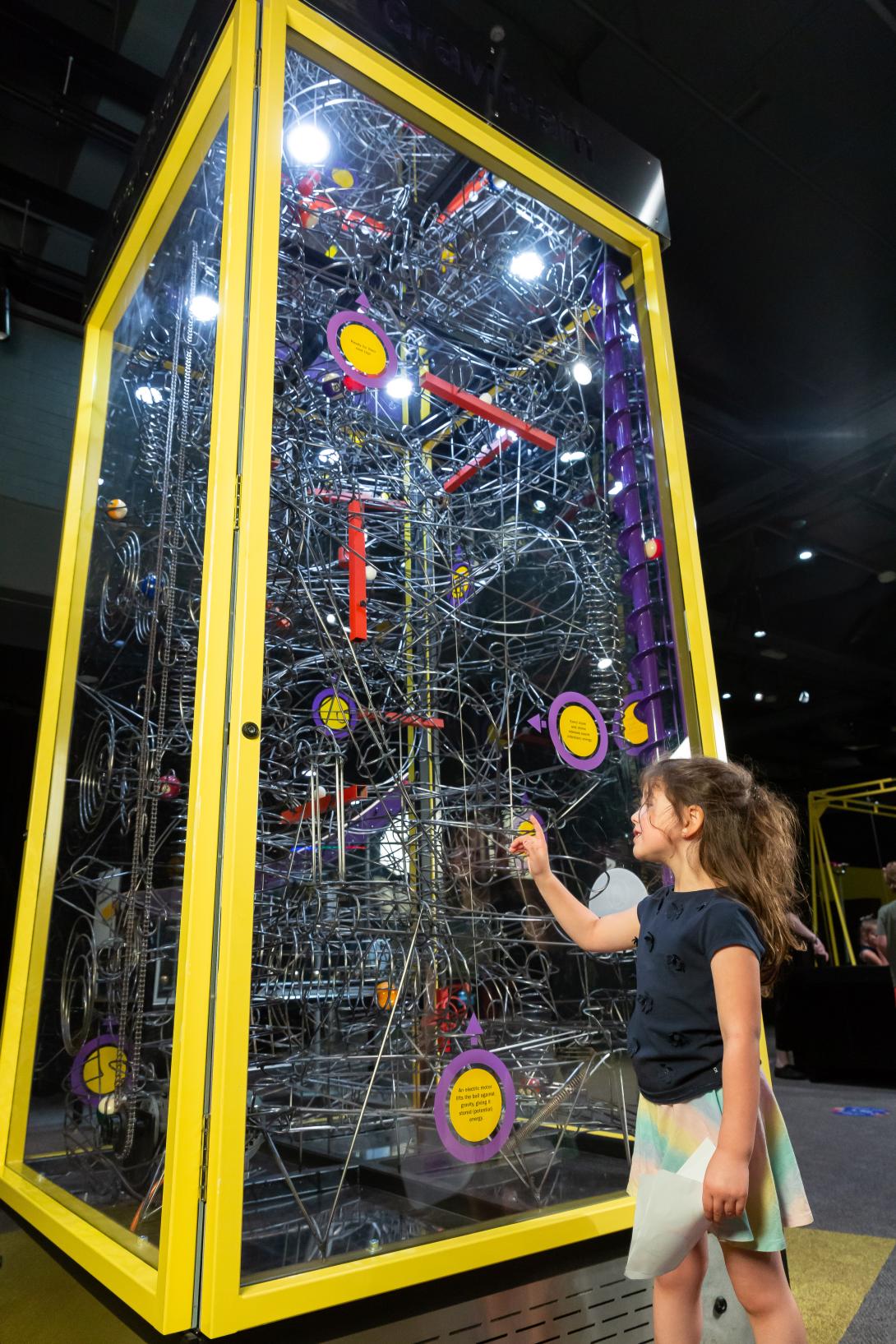 When the balls are lifted to the top of the case, they gain potential (stored) energy. When they are released, this potential energy is converted to other forms of energy; kinetic (motion) energy being the most obvious. Some energy is converted to sound and some into heat due to friction and collisions.
When the balls are lifted to the top of the case, they gain potential (stored) energy. When they are released, this potential energy is converted to other forms of energy; kinetic (motion) energy being the most obvious. Some energy is converted to sound and some into heat due to friction and collisions.
“I still can’t resist pausing to watch the Gravitram when I go by, there’s really nothing else like it,” Questacon’s Senior Exhibitions Manager, Anita Beck said.
“The genius of Shab Levy can’t be over-stated. He put in hundreds of hours of work finely balancing the mechanisms so that each ball reaches the bottom of the Gravitram via the force of gravity alone, channelled through the metal loops, spirals, seesaws and even the occasional rest.
“If you listen, the balls sound Big Ben’s famous chimes as they strike the precision-placed rods that act as a deconstructed glockenspiel within the sculpture. It’s really a work of art, and Australia is privileged to have one. Canberrans are even luckier as they can see it every day,” she said.
Levy went on to create another eight Gravitrams in his lifetime, one was destroyed, making a total of twelve which exist in the world today. Seven are in museums and sciences centres in the USA. Lahore in Pakistan, Rehovot in Israel, Jeddah in Saudi Arabia and Porto Alegre in Brazil are the other cities alongside Canberra lucky enough to boast displaying one.
“The Shab Levy kinetic sculpture is part of the DNA of Questacon and has been on display since 1988. It’s fitting that we pay tribute to this monumental giant as we celebrate the Centre’s 35th anniversary,” Ms Beck said.

